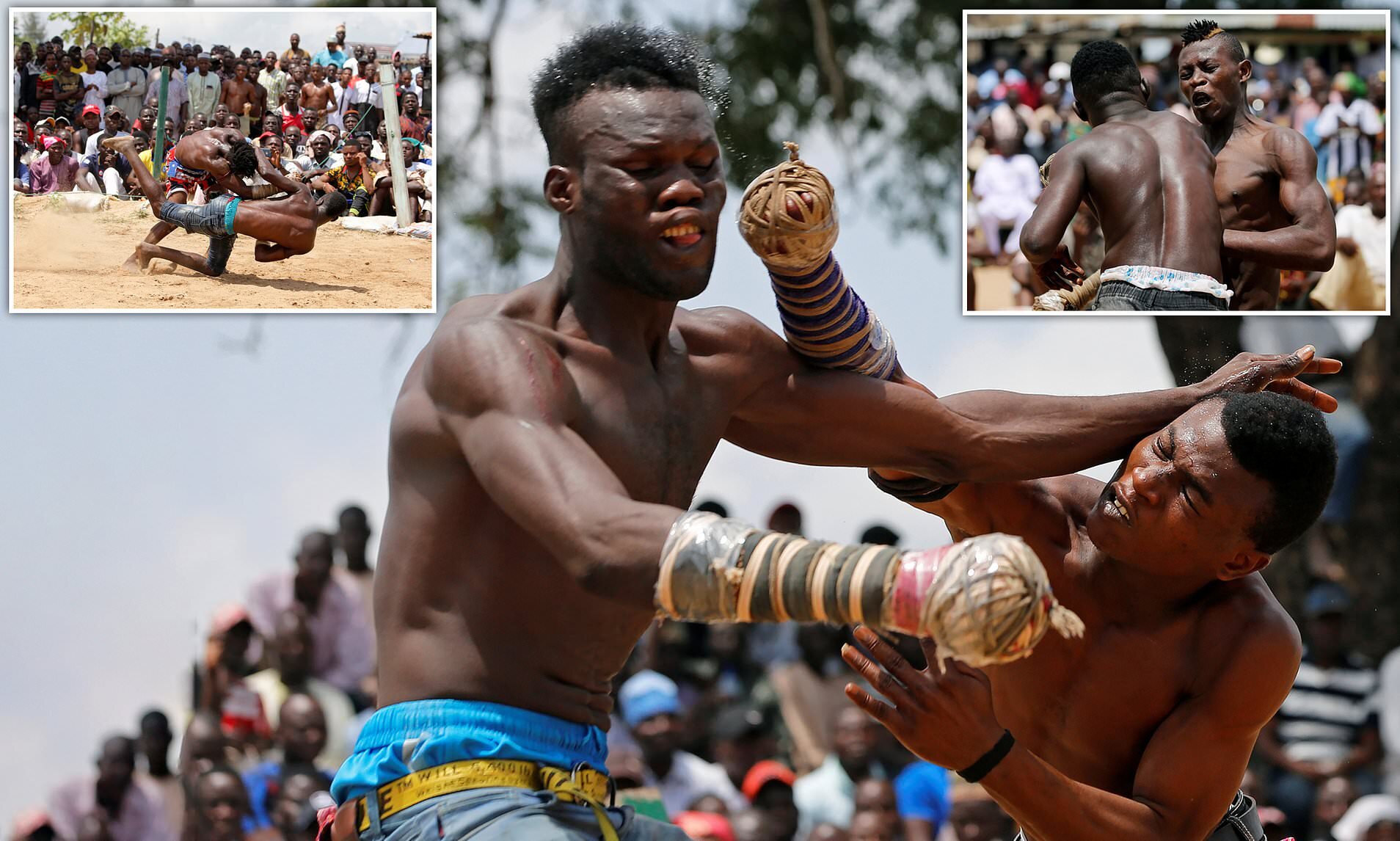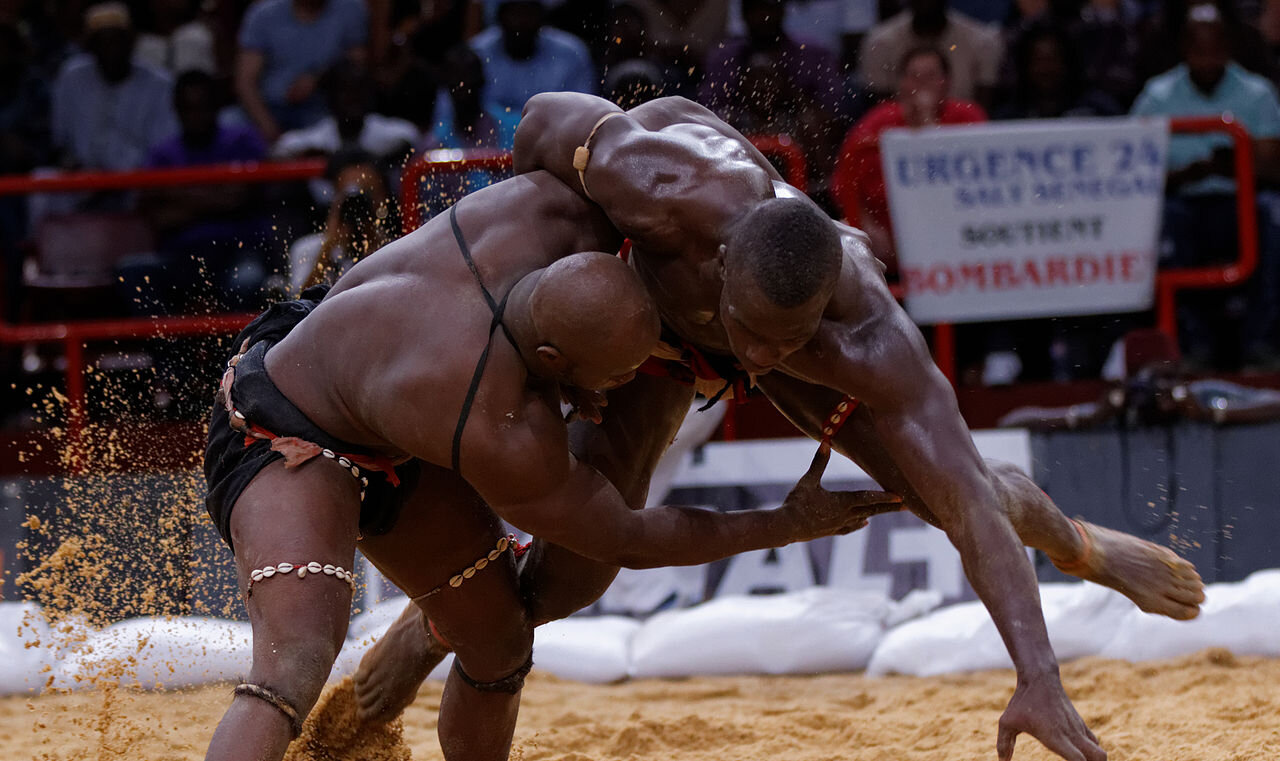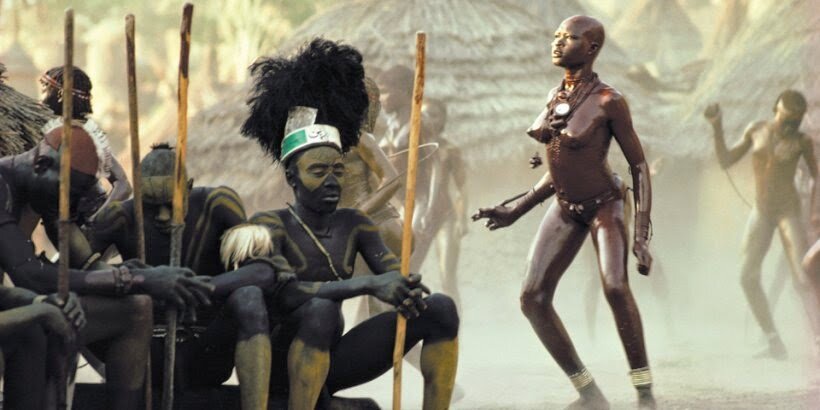A Brutal Introduction to African Martial Arts
Guest Article
Authors: Manny OG (Silat Sharaf UK) and Richard Khamese (Mukhanda International Group)
When it comes to Martial Arts, we visualize somebody from Asia throwing kicks and blows, twisting arms, snapping necks, etc. What we don’t visualize is Africans doing the same, not because Africans don’t practice Martial Arts but mostly because Martial Arts in Africa is not exposed to other parts of the world. Thankfully, in recent times social media has exposed many African Martial Arts to the world. Martial Arts in Africa was mainly for warfare and later became an avenue of dispute settling between friends, families, towns, villages and kingdoms. Also, as a way to woo maidens for marriage and show of extreme masculinity. This article will throw some light on some of these styles of fighting.
Dambe
The hand wrapped in rope is called “spear” while the other hand is called “shield”
Dambe is a Martial Arts of the Hausa people from West Africa. Competitors in a typical match aim to subdue each other into total submission mostly within three rounds. It often results in serious bodily injuries for the challengers such as broken jaws and ribs. The main goal, to “kill” the opponent by taking them to the ground. A sport that is definitely not for the faint-hearted. The tradition is dominated by Hausa butcher caste groups, and over the last century evolved from clans of butchers traveling to farm villages at harvest time, integrating a fighting challenge by the outsiders into local harvest festival entertainment. It was also traditionally practiced as a way for men to get ready for war, and many of the techniques and terminology allude to warfare.
The fighters bind their punching hand with a rope called 'Kara'. The aim? To make their arm, which is known as the 'spear' in the sport, as hard as possible because this is their primary weapon. The weaker hand is used as shield. The sport is far less vicious than it used to be. In the past, fighters were permitted to wrap glass deep into their Karas but that practice has now been outlawed. Despite looking like fists only fighting style, kicks, elbows, knees and sometimes headbutts are allowed. There’s also the use of special herbs and charms that are cut into the skin of these fighters, which are believed to help them win either by putting their opponents ins a daze, give them extraordinary powers or invulnerable to fatal strikes.
Today, companies of boxers travel performing outdoor matches accompanied by ceremony and drumming, throughout the traditional Hausa homelands of northern Nigeria, southern Niger and southwestern Chad. It has also gained global recognition thanks to social media.
Besua
Image credit: Ronald de Hommel
This is a wrestling style from Cameroon, central Africa. It emerged in Cameronian ancient history as a battle between two men Ngominga & Malobe representing their villages over land disputes, a choice over taking up arms and causing bloodshed.
In Besua, techniques focus on the body of the opponent with arms and legs. Victory is achieved when the opponent is struck down, regardless of the location of the body touches the ground; thus, the tripping caught by the hands is a defeat. A match between two villages starts with all the contestants, who wear skimpy sarongs, meeting in the middle of the large expanse of grass which forms the wrestling pitch. The wrestlers tease each others by making gestures of threat and then challenge each others into a nail-biting fight. A contestant wins a bout by throwing his opponent on his back or by taking him down and then either rolling him on his back or forcing him flat on this stomach. To set the atmosphere, drummers on an elevated stage beat intricate rhythms on large log drums throughout the match while the crowds roar and shout encouragement to the wrestlers. The techniques used usually ranges from from hip throws, fireman’s carry, arm and headlocks.
Laamb
Various takedown methods from leg sweeps to full-body throw
The Senegalese form traditionally allows blows with the hands (frappe), the only one of the West African traditions to do so. As a larger confederation and championship around Lutte Traditionnelle has developed since the 1990s, Senegalese fighters now practice both forms, called officially Lutte Traditionnelle sans frappe (for the international version) and Lutte Traditionnelle avec frappe for the striking version. Senegalese wrestlers train extremely hard and may perform press ups and various difficult physical exercises throughout the day to build up their strength. However while they believe strength is important they also believe that there is an element of luck in the winner, and may perform rituals before a match to increase their chances. Common to Senegalese wrestlers is rubbing a foot on a stone or rubbing themselves with lotions or oils to increase "good luck".
Chikundi
This is the African fist-fighting combat system of the Gusii/Kissi tribe from Kenya, east Africa, which consists of the following techniques: Oruta Chikundi is the method of striking with the fist on any part of the body even the head, which was the most common target. No gloves or shields are used, only bare fists. Unlike western boxing there are no rounds, you fight until the other person gives up or is knocked out. Any part of the body is a legal target, there are no fouls, the aim is to hurt the opponent. Ogotunga Chikundi is a method of blocking and parrying with the other arm, thus allowing you to counterattack and strike with the fist or elbow.
Enyameni
Enyameni is a form of combat grappling utilizing different techniques to subdue or take down the opponent. Ebeabo is a technique of grabbing the neck region to cause pain, numbness, and depending on the context can be used to kill by stopping the opponent's breathing. Okoewa is throwing techniques and unbalancing methods used to put the opponent on the ground. Okomobuna/Okoboko are two names for the same technique, which is basically grabbing the opponent's arm and twisting it to cause pain. In a life and death struggle, this same technique can be used to break the arm.
Tahtib Stickfighting
Tahtib (or Tahteeb) is an ancient Egyptian Martial Art practiced for more than 5000 years. There are murals and small ceramics with drawing of people practicing the art during the Fatimid Era (909–1171 A.D.). Several other engravings on archaeological sites show how it has been used as a tool of warfare for generations. During ancient times, Tahtib was part of military training, along with other training such as archery, wrestling and cavalry tactics. Over the years, this ancient art turned into a demonstrative dance performed by villagers and rural communities as a form of stress relief. The dance was always accompanied by music, usually a Tabla (goblet drum), and a Mizmar (folk-style oboe made of reed). In essence, Tahtib is a very effective Martial Art that has been neglected, but has garnered a renewed interest in Egypt and abroad in the last 20 years.
Nuba Martial Arts
Nuba Martial Arts consists of stickfighting and wrestling techniques. It is said to have been originated from the Nuba mountains in southern Sudan. The stickfighting is where the fighters face off against each other with a “spear and shield”. In the olden days, it was more than just a game, but a show of courage and honor for men to fight in the ring. The Nuba Fighting art was also used as a tool of warfare when tribes clashed with each other. Unarmed and armed combat techniques can be used to simply fight as in a friendly fight within clans or maim and kill the enemy warrior in warfare. When in warfare against other tribes, when the warrior loses his weapons during combat, he will utilize the unarmed combat methods to hurt or kill his opponent. Nowadays, it has transformed into a sport where young men fight as a way to build a reputation for themselves as athletes, but the Martial Arts aspect is never lost, and is ever present in the Sudan.







